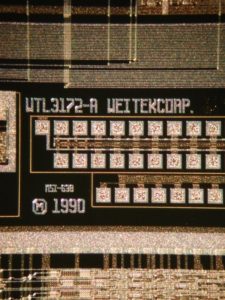 Break Chip ATmega1284V Code
Break Chip ATmega1284V Code
Break Chip ATmega1284V security fuse bit by crack MCU ATmega1284V tamper resistance system, extract Microcontroller code from flash memory and eeprom memory;

Break Chip ATmega1284V security fuse bit by crack MCU ATmega1284V tamper resistance system, extract Microcontroller code from flash memory and eeprom memory
Many register and bit references in this section are written in general form. A lower case “n” replaces the Timer/Counter number, in this case 0. A lower case “x” replaces the Output Compare Unit, in this case Compare Unit A or Compare Unit B.
However, when using the register or bit defines in a program, the precise form must be used, i.e., TCNT0 for accessing Timer/Counter0 counter value and so on. The definitions in Table 69 are also used extensively throughout the document. The Timer/Counter can be clocked by an internal or an external clock source before chip PIC16F72A binary recovery.
The clock source is selected by the Clock Select logic which is controlled by the Clock Select (CS02:0) bits located in the Timer/Counter Control Register (TCCR0B), the main part of the 8-bit Timer/Counter is the programmable bi-directional counter unit. Figure 39 shows a block diagram of the counter and its surroundings when recover IC PIC16F687 software.
Depending of the mode of operation used, the counter is cleared, incremented, or decremented at each timer clock (clkT0). ClkT0 can be generated from an external or internal clock source, selected by the Clock Select bits (CS02:0). When no clock source is selected (CS02:0 = 0) the timer is stopped. However, the TCNT0 value can be accessed by the CPU, regardless of whether clkT0 is present or not. A CPU write overrides (has priority over) all counter clear or count operations.
The counting sequence is determined by the setting of the WGM01 and WGM00 bits located in the Timer/Counter Control Register (TCCR0A) and the WGM02 bit located in the Timer/Counter Control Register B (TCCR0B). There are close connections between how the counter behaves (counts) and how waveforms are generated on the Output Compare outputs OC0A and OC0B. The Timer/Counter Overflow Flag (TOV0) is set according to the mode of operation selected by the WGM02:0 bits. TOV0 can be used for generating a CPU interrupt.